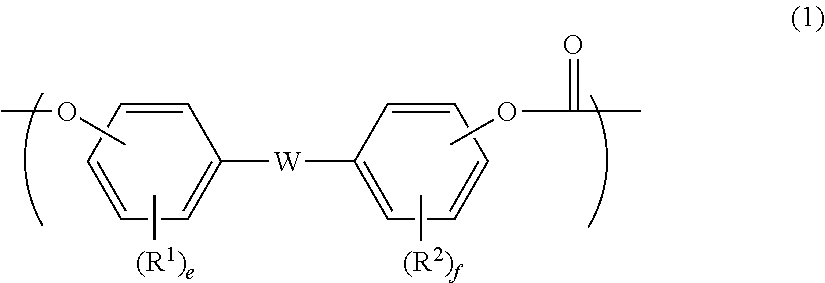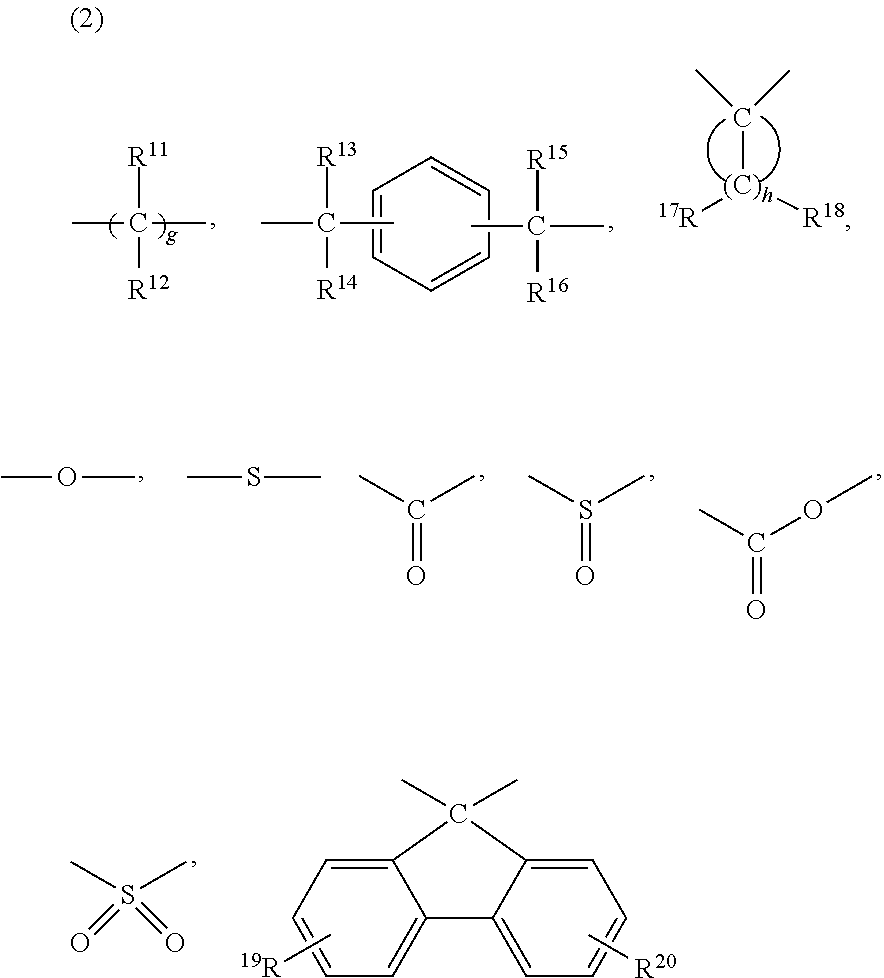Polycarbonate resin composition
a polycarbonate resin and composition technology, applied in the field of polycarbonate resin compositions, can solve the problems of difficult to put into practical use, difficult to obtain satisfactory mechanical properties, low workability of polycarbonate resin, etc., and achieve excellent mechanical properties, chemical resistance, appearance and peeling resistance.
- Summary
- Abstract
- Description
- Claims
- Application Information
AI Technical Summary
Benefits of technology
Problems solved by technology
Method used
Image
Examples
examples
[0300]The following examples are provided for the purpose of further illustrating the present invention. “Part” in Examples means parts by weight and “%” means wt % unless otherwise noted. Evaluations were made by the following methods.
(Evaluation of Thermoplastic Resin Composition)
[0301](i) Appearance
[0302]The appearance of a sample plate (three-stage plate with a hole) manufactured by the following method was evaluated visually. The evaluation was made based on the following criteria.[0303]⊚: a weld is not noticeable and a streaky appearance defect is not seen[0304]◯: a weld is slightly noticeable but a streaky appearance defect is not seen[0305]Δ: a weld is slightly noticeable and a streaky appearance defect is seen[0306]x: a weld is striking and a marked streaky appearance defect is seen[0307](ii) Tape Peeling Resistance
[0308]A cellophane tape (CELLOTAPE CT-15 of NICHIBAN Co., Ltd.) was put on a 2 mm-thick part of a sample plate (three-stage plate with a hole) obtained by the fo...
examples i-1 to i-24
, Comparative Examples I-1 to 1-5,
examples ii-1 to ii-31
, III-1 to III-29, IV-1 to IV-33
[0332]Mixtures of components excluding the polyolefin-based resin as the component B and having compositions shown in Tables I-1 to I-3, Tables -11-1 to 11-2, Tables III-1 to III-2 and Table IV-1 to IV-2 were each supplied from the first feed port of an extruder. The mixtures were obtained by mixing with a twin-cylinder mixer. The propylene-based resin as the component B was supplied from a second feed port by using a side feeder. Each of the resulting mixtures was melt-kneaded and extruded by means of a vented double-screw extruder having a diameter of 30 mm (TEX30α-38.5BW-3V of The Nippon Steel Works, Ltd.) at a screw revolution of 230 rpm, a delivery rate of 25 kg / h and a vent vacuum degree of 3 kPa to obtain pellets. The extrusion temperature was set to 250° C. from the first feed port to the die.
[0333]Some of the pellets were dried with a hot air circulation drier at 90 to 100° C. for 6 hours and formed into test pieces for evaluation (ISO tensil...
PUM
| Property | Measurement | Unit |
|---|---|---|
| Temperature | aaaaa | aaaaa |
| Temperature | aaaaa | aaaaa |
| Weight | aaaaa | aaaaa |
Abstract
Description
Claims
Application Information
 Login to View More
Login to View More - R&D
- Intellectual Property
- Life Sciences
- Materials
- Tech Scout
- Unparalleled Data Quality
- Higher Quality Content
- 60% Fewer Hallucinations
Browse by: Latest US Patents, China's latest patents, Technical Efficacy Thesaurus, Application Domain, Technology Topic, Popular Technical Reports.
© 2025 PatSnap. All rights reserved.Legal|Privacy policy|Modern Slavery Act Transparency Statement|Sitemap|About US| Contact US: help@patsnap.com



